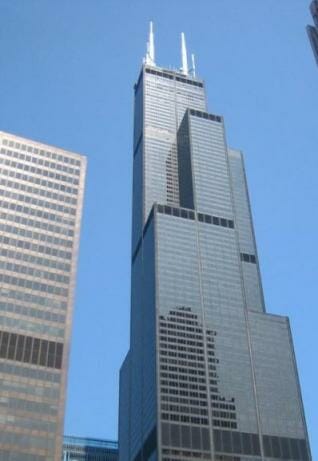What’s in a Name? According to Chicagoans and the Commercial Real Estate Industry — Everything
The process and purpose behind transitioning naming rights seems simple: A company purchases the rights to rename a building or property to increase brand awareness and ultimately market share and revenue. However, the naming rights of buildings, an important part of Chicago history and culture, have implications beyond simply updating addresses. As property naming rights transactions become more common, we reviewed some of the more famous (or infamous) building name changes in the City of Chicago and examined cultural implications.
There are two common forms of sponsorship for naming rights: presenting sponsor and title sponsor. A presenting sponsor has a name of a corporation or brand attached to an already-existing name. A title sponsor replaces the original name of the property. The most dramatic (and difficult for people to accept) is the title sponsor because many believe the history of the building is compromised when its original name is replaced.

Comiskey Park was renamed U.S. Cellular Field in 2003.

The Sears Tower was renamed Willis Tower in 2009.
Perhaps the most prevalent property name changes involve stadiums for professional sports teams. Nearly a decade ago, the Chicago White Sox’s home stadium changed from Comiskey Park to U.S. Cellular Field in 2003 after U.S. Cellular purchased the naming rights. Although the change was fairly well received, some long-time White Sox fans and sportscasters still call the ballpark “Comiskey Park.”
When Chicagoans think of landmark name change, most will refer to the renaming of the Sears Tower to the Willis Tower in July 2009. As the tallest building in the Western Hemisphere, it is a popular destination for visitors and one of Chicago’s most prominent buildings. The original Sears Tower got its name because Sears, Roebuck & Co. planned to consolidate Chicago-area employees into this one location. Insurance broker Willis Group Holdings, Ltd. leased more than 140,000 square feet of space on three floors in 2009; the naming rights to the building were obtained as part of the negotiations and came at no cost to Willis.
This development caused much public dissent citywide and even across the nation. Time magazine called it one of the worst corporate building name changes, and a reporter from Chicago Magazine refused to refer to Willis Tower in a published feature. A Chicago Tribune reporter wrote, “The city’s attachment to the building is far more complex than recognizing its economic contribution. This is a city with a deep appreciation of tradition and a healthy ego, where some Chicagoans still mourn the switch from Marshall Field’s to Macy’s.”
The Willis Tower isn’t the only building with a name deeply-rooted in the history of Chicago. The former Santa Fe Building (originally the Railway Exchange Building) is located in the Historic Michigan Boulevard District, and any changes to the building are subjected to review by the Commission on Chicago Landmarks. When Motorola signed a lease at the building last April, the deal included the power to change the building’s signage from Santa Fe to Motorola. According to Chicago lore, Daniel Burnham crafted his Chicago Plan in 1904 on the building’s top floor, so the building’s sign has “significant historical and architectural” implications.

330 N. Wabash Av. will be renamed AMA Plaza in Sept. 2013.
Over the years, the majority of building naming transitions do not result in public outcry. In fact, many commercial real estate professionals use naming rights as a competitive advantage to attract tenants. For example, the iconic Smurfit-Stone Building was recently renamed the Crain Communications Building in March, after the publisher moved its headquarters there. In addition, the marquee 330 N. Wabash Av. building (formerly the IBM Building) will be renamed AMA Plaza when the American Medical Association moves its headquarters to the Ludwig Mies van der Rohe-designed tower in September 2013.
The private sector isn’t the only group leveraging naming rights of Chicago buildings. The City of Chicago, the CTA and the Cook County government are using building naming rights to generate additional revenue. In May, the CTA offered to sell businesses naming rights and sponsorships to 11 rail stations throughout the North Side and downtown. CTA officials described the stations as “iconic assets’’ that companies would be proud to associate their names with for marketing campaigns.
While nobody is certain how far the City will go with selling naming rights to public properties, we’ll watch and see if the private sector continues market naming rights. As the Chicago commercial real estate industry grows more competitive and less office space is available for large tenants, property naming rights should remain an important bargaining chip for both tenants and property owners.
Have you incorporated naming rights to attract tenants to a marquee building? How have you seen this practice affect tenants, property managers and bystanders? Please share thoughts.

